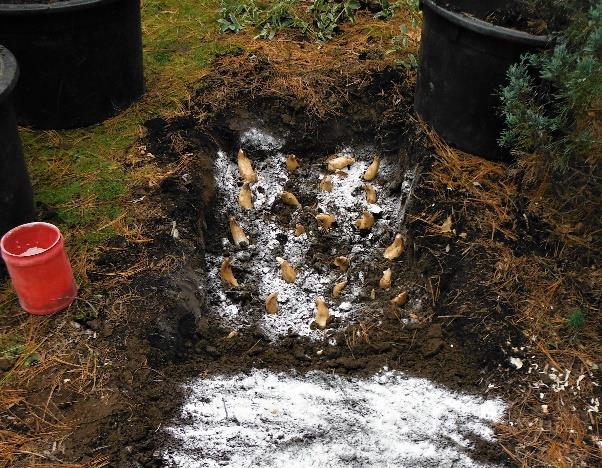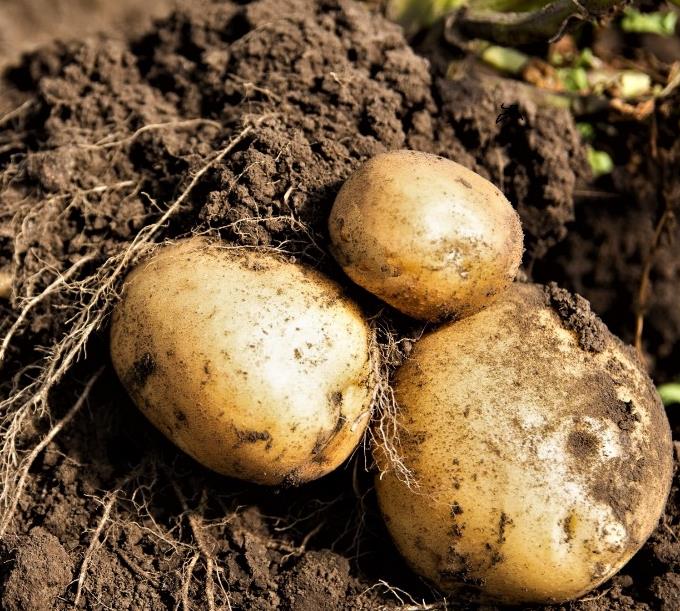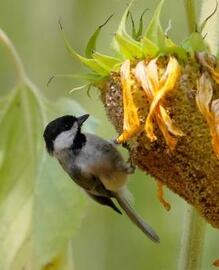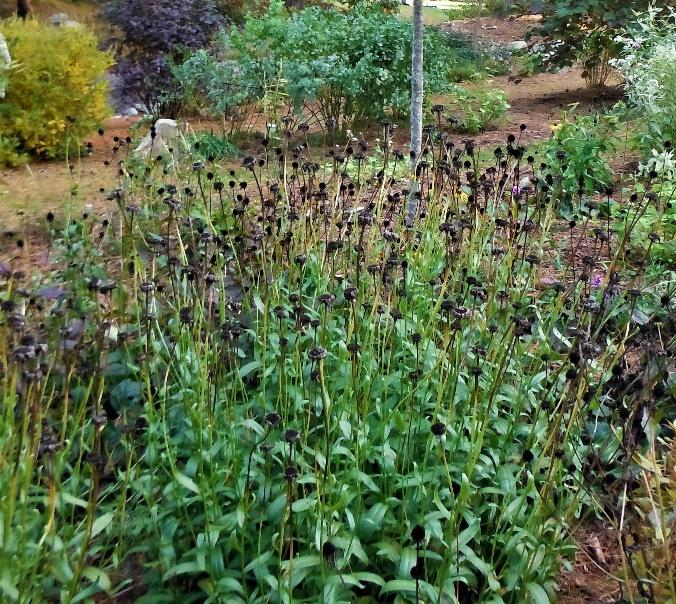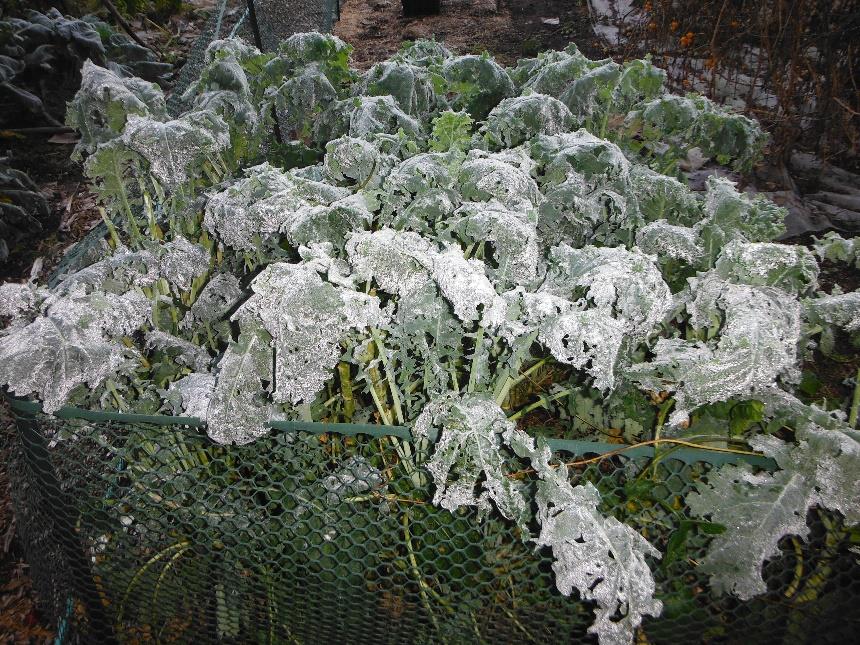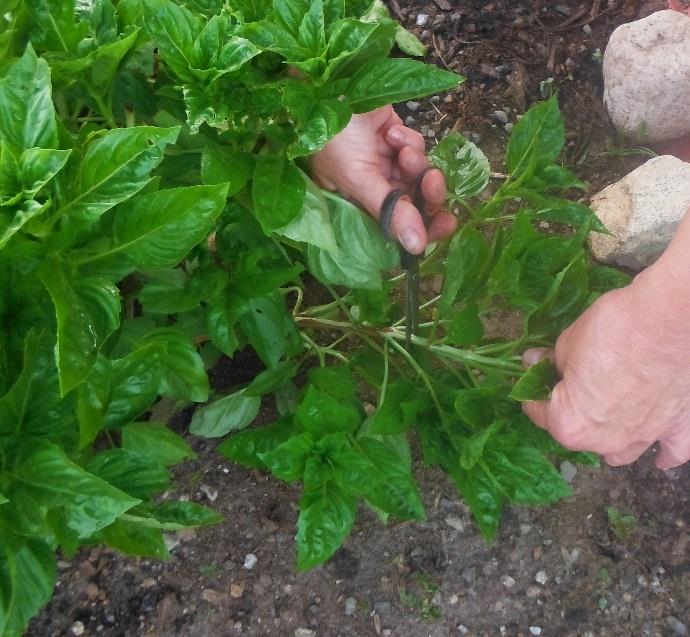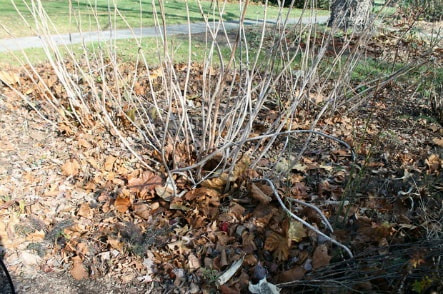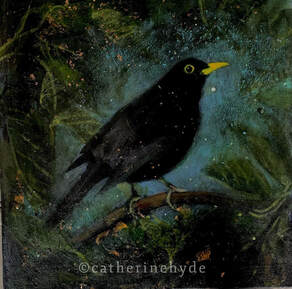Horticultural Hints for October!
|
Bulbs. Your tulips should be in the ground now, and small bulbs such as crocus, snowdrops, and grape hyacinth should be going into the ground by mid-month. Hold off planting daffodils until later in the month. To keep squirrels and other varmints from digging up and eating your bulbs, dust them with lime as you put them into the ground, and then add a layer of lime on top of the planted area. The lime interferes with smelling the bulbs, and is an important in ‘sweetening’ the soil for these plants that come from a part of the world with much less acidic soil. If you have very aggressive rodents, add hot pepper or chili powder to bulb coating.
Remove potatoes before there’s a hard frost. Dig them out carefully and then brush off soil, but do not wash them before storing. And, keep them out of the light. Potatoes do best if allowed to cure for a couple of weeks in a cool, dark place. Place newspapers under them while the skin hardens. Do not try to store any that have nicks or bruises; instead, use them immediately.
Leave some seeds for the birds!
|
Cleaning up the perennial bed doesn't mean cutting to the ground. The traditional advice for cleaning up your perennial garden in October was to cut everything to the ground. Science – and common sense based on observation – says that practice took away a valuable food source for both migrating and over-wintering birds. Instead, leave up the flower stalks with seed heads birds. Migrating birds appreciate the food. And it is vital for those species that over-winter in New England. In addition to less work for you, the birds make your garden a more interesting place throughout the winter. The ‘no-cut’ policy isn’t universal, though. Always vigorously clean up any plant that has battled disease this year. Again, you’ll save yourself work and enjoy your garden more in the spring.
A light covering over your vegetables – a sheet should suffice – can be the difference between harvestable squash or greens and produce that will have to be discarded because of one cold night.
Don’t wait until it’s too late to harvest your final round of root crops. Carrots, beets, kale, spinach and radishes that you sowed as the warm weather crops were removed in August and early September should be ready for the dinner table now. They are generally frost hardy and usually can be left in the ground into November. Cover them with light cloths if a subfreezing night is forecast. Serving fresh vegetables from your own garden is one more thing to be thankful for on Thanksgiving.
|
How to preserve basil? Make your own pesto! There are lots of simple recipes available online: all it takes is olive oil and walnuts.
Finish harvesting the vegetable garden.
Many inland areas of eastern Massachusetts saw a freak, mid-September frost that put an end to tomatoes, peppers and other warm-weather crops. If your garden was spared, complete your harvest of these tender vegetables now. Basil, for example, will turn black when temperatures drop to 32 degrees even for a brief period, and tomatoes become unusable once the liquid in them freezes. Once you’ve harvested your frost-sensitive vegetables, turn your attention to harvesting, cleaning and storing your remaining fresh produce. Don’t rake those leaves! Take a look at the forest floor: it is covered with leaves. They provide the only nutrients the native trees get. They are the mulch that protects the roots and new seedlings. Traditionally, we rake leaves out from under trees and shrubs because it ‘looks neater’ and we think those leaves will form a mat. Instead, leave them in place. Some will break down over the winter, returning the nutrients to the soil in the process. Those that remain will help protect the roots and crowns of your plants as well as provide an over-wintering home for beneficial insects. Cleaning them out is a spring chore.
|
Horticultural Hints are written and created by Betty Sanders.
For more horticultural suggestions throughout the year, please visit www.BettyOnGardening.com
For more horticultural suggestions throughout the year, please visit www.BettyOnGardening.com

